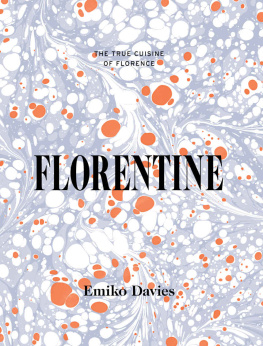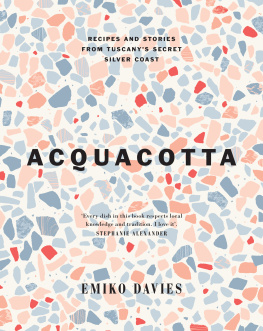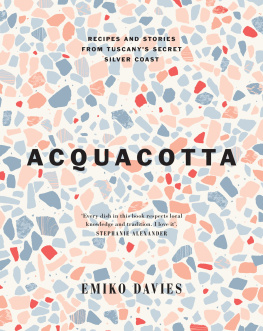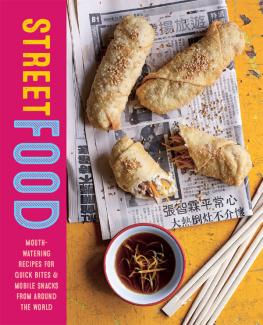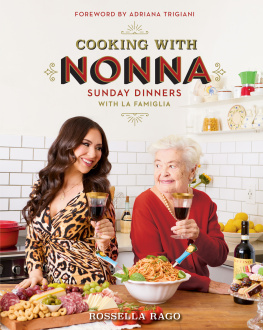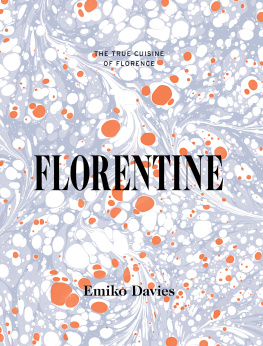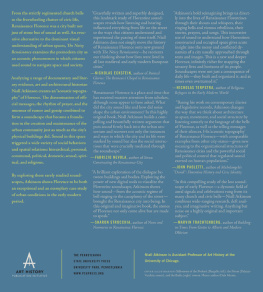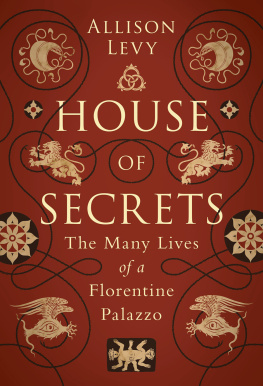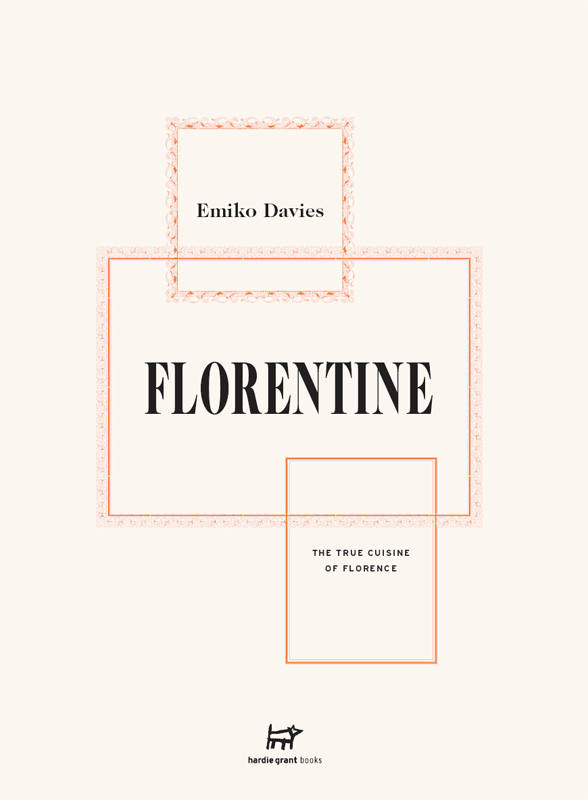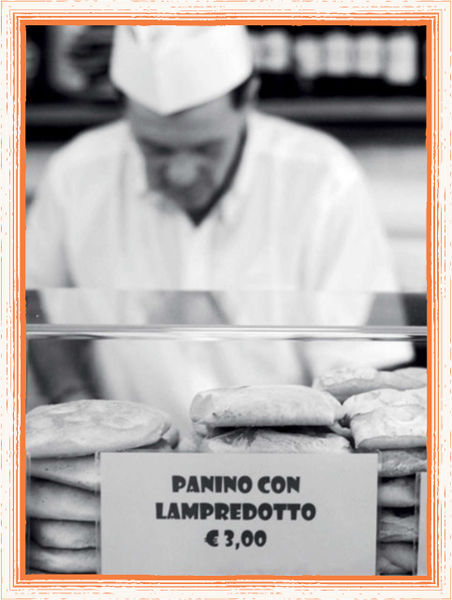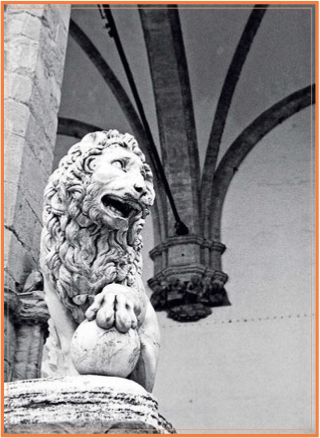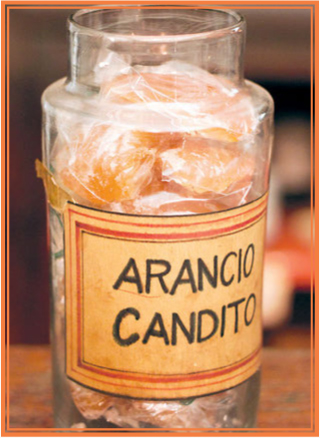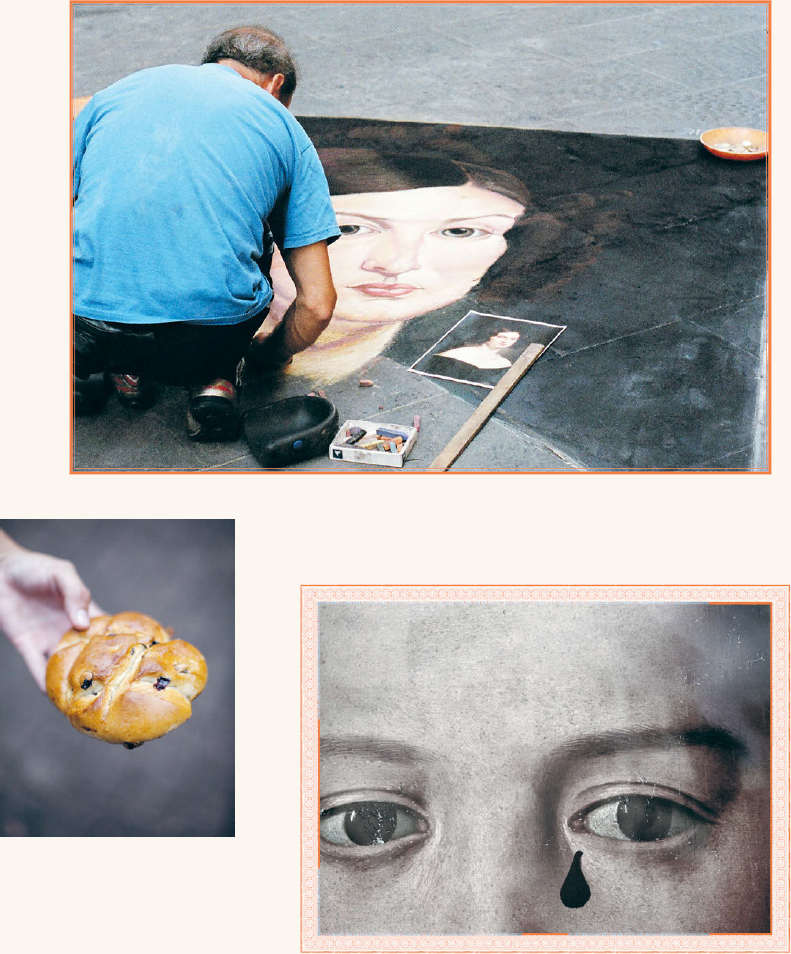In Florence, history has a way of weaving itself through every aspect of life, and food is no exception. The kitchen staples and many of the favourite dishes of the Renaissance citys cuisine are much the same as they were during Dantes medieval Florence or Catherine de Medicis sixteenth century because, as locals like to say, squadra che vince non si cambia in other words, you should not (and need not) change a good thing.
A stroll through the citys streets past pastry shops bustling with espresso-sippers, busy lunchtime trattorias, food vans selling tripe sandwiches and charming hole-in-the-wall wine bars reveals how Florentines remain proudly attached to their unchanging cuisine, a cuisine that tells the unique story of its city, dish by dish.
The Florentines, like most Italians, have a very important relationship with their food. There are rules about what can be eaten when, with what accompaniments and in what particular order. Seasons and traditions play an important role in the kitchen and you can easily tell the time of year by simply looking at a Florentine menu, bakery window or market stall.
Florentine cuisine is earthy and rustic, at times even austere. In his 2003 book Cucina Fiorentina, Tuscan gastronome and journalist Aldo Santini compares it to a man with his head screwed on. Not extravagant, but reliable and modest. Sincere and straightforward. Although simple, it is prepared with pride and care, and makes particularly good use of bread and olive oil, two of the cuisines staple ingredients.
In his introduction to The Decameron, fourteenth-century Florentine author Giovanni Boccaccio (13131375) recounts how some Florentines attempted to live better and avoid the plague by following a philosophy of Delicatissimi cibi e ottimi vini temperatissimamente usando, e ogni lussuria fuggendo In other words, delicate food and very good wines, used with care and avoiding every luxury. In many ways, this is still the Florentine approach to food.
With a nod to medieval origins, many dishes reflect the ethos of not letting anything go to waste. The Florentines are masters of thrift, using up what others would normally throw out. They make the most of stale bread, chicken livers, lampredotto (abomasum tripe) and even roosters combs although this once popular Renaissance dish, known as cibreo, is almost extinct today. All of these ingredients are carefully prepared in characteristically simple ways, unique to Florence, in dishes such as ribollita, crostini di fegatini and lampredotto panini. Not only are these ingredients a model of economy in the kitchen, but they are also exalted, with these well-known dishes being elevated to hero status in the city.
Florentine food journalist Leonardo Romanelli points out that the only weakness in the local cuisine is dessert. Missing a sweet tooth, many of Florences traditional sweets are either bread-based, such as the autumnal schiacciata alluva (grape focaccia), pandiramerino (raisin and rosemary buns) and schiacciata alla fiorentina (a yeasted cake dusted with powdered sugar); or they are deep-fried and are strictly a winter Carnival treat, such as cenci and frittelle (rice fritters). Zuccotto is the closest thing to a proper dessert, resembling a bright pink version of the dome of Florences Duomo, with Alchermes-dipped sponge encasing a rich ricotta and chocolate filling. It seems like a relative of trifle or even tiramisu, and is sometimes served frozen like semifreddo. And then there are, of course, cantuccini (almond biscotti), the preferred way to end a meal at a Florentine table, with a glass of sweet vin santo for dipping and inspiring conversation.
It goes without saying that Florence is a city that lives in its past. Its medieval and Renaissance history, immortalised in famous buildings, sculptures and paintings, is the main reason the city is as loved and visited as it is today. In every nook and cranny, history seeps out onto the well-trodden stone streets and into the every day.
Food in the Renaissance
The Renaissance was a period of enormous change, not only in the world of art and architecture, or even politics, but also in gastronomy. The same sensibility that was being used in art was influencing dishes in Florentine kitchens, and the subsequent banquets in noble palazzi.
During this time, cooking techniques improved and became more sophisticated, while aesthetics and presentation of food became more important than ever. Cheese-making techniques were much the same as they are today. Apparently Michelangelo would request seasonal pecorino cheese (known as marzolino cheese) be sent to him from Florence when he was working in Rome. The discovery of the New World in 1492 also brought a plethora of new and exotic ingredients to experiment with in the kitchen. These ingredients gave rise to more refined and elegant food.
At the 1469 wedding of Lorenzo the Magnificent (14491492) Florences beloved ruler and benefactor to artists such as Michelangelo and Botticelli there was a deliberately modest public feast, where 400 of the towns citizens were invited to share in the event. The simple menu consisted of savoury appetisers, boiled and roasted meat, biscuits and candied fruits.
Three years earlier, for the marriage of Lorenzos sister, Nannina, into Florences powerful Ruccellai family, celebrations were more extravagant, yet still refined. Fifty cooks fed over 500 people over three days.
Boiled tongue and biancomangiare were served at the first course: a delicate dish and enormously popular in the Renaissance, biancomangiare was made with finely pounded, poached chicken breast cooked with almond milk, white bread and sugar until creamy, then garnished with rosewater or spices. It had a beautifully creamy texture and a delicate but perfectly balanced flavour, and was made using techniques that ensured that it remained perfectly white in colour. It is a wonderful example of how the culinary arts went through a Renaissance as much as the rest of the arts, taking a giant leap from the rough gruels of the Middle Ages.
This course was followed by roast meats garnished with rosewater, then cold meats and jellied fish, and then a second roast. The food, as characterised by this period and by its leaders, was splendid and refined, but not at all over the top.
AN ARTISTS FOOD DIARY
Pontormo (14941557), an often misunderstood Mannerist artist, kept a diary between 1554 and 1556, the years just before his death. It was very much a food journal and, in between little sketches, a humble account of a modest Renaissance diet.
He mentions some of the fantastic meals he enjoyed with his star pupil and good friend, Bronzino. In one entry, he writes that after one such long Sunday lunch, which turned into supper, he fasted until Wednesday when he could finally bring himself to have some Trebbiano and a couple of eggs. He goes on to list, almost daily, his main meals: a cabbage and an omelette; half of the head of a kid and soup; zibibbo grapes, bread and capers in salad; mutton soup; an omelette with broad beans and some caviar; some dried figs. He even mentions eating rosemary bread, still a favourite bakery find known as

